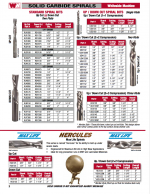Bugsysiegals
Member
- Joined
- Mar 19, 2016
- Messages
- 908
I’ve 5/8” BB sides for my drawer boxes and wondering whether I should leave the tops flat or use a roundover bit ... how do you prefer yours?
If with roundover, I’ve no roundover/chamfer bits and see WhiteSide has 20% off ... would you recommend any specific rounderover or chamfer bits? What about for dado cuts ... I seen Sedge make dado’s with the router and while the table saw is easier for batches of stock, I liked the router for non through cut stopped dado’s so you don’t see the dado on butt joints. Are there bits for this you’d recommend which create “perfect” width for the varying thickness of plywoods?
If with roundover, I’ve no roundover/chamfer bits and see WhiteSide has 20% off ... would you recommend any specific rounderover or chamfer bits? What about for dado cuts ... I seen Sedge make dado’s with the router and while the table saw is easier for batches of stock, I liked the router for non through cut stopped dado’s so you don’t see the dado on butt joints. Are there bits for this you’d recommend which create “perfect” width for the varying thickness of plywoods?

